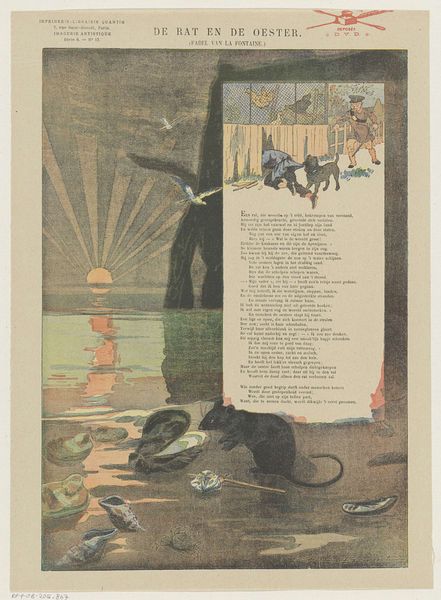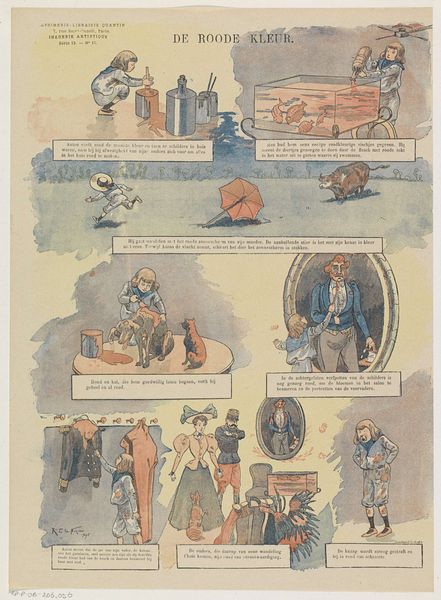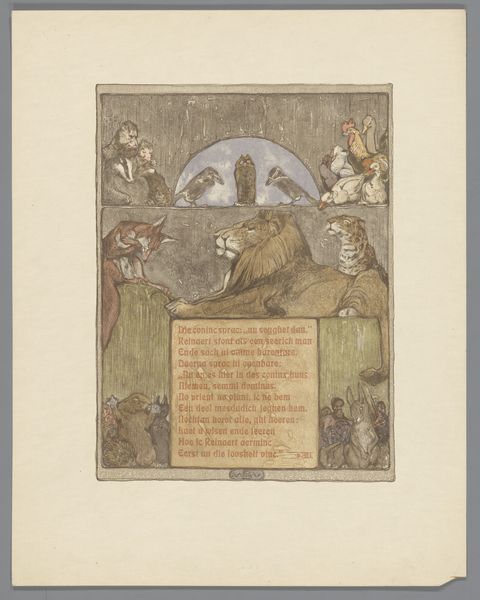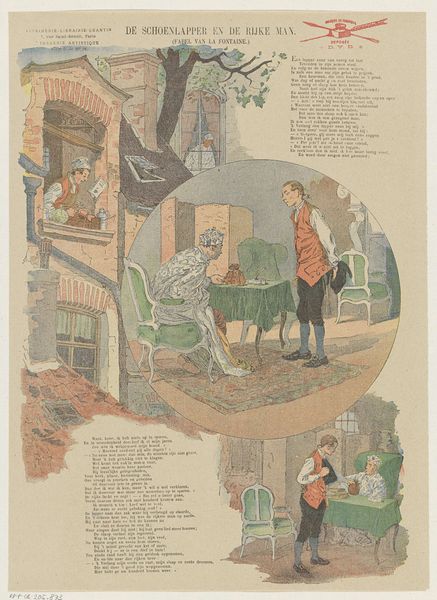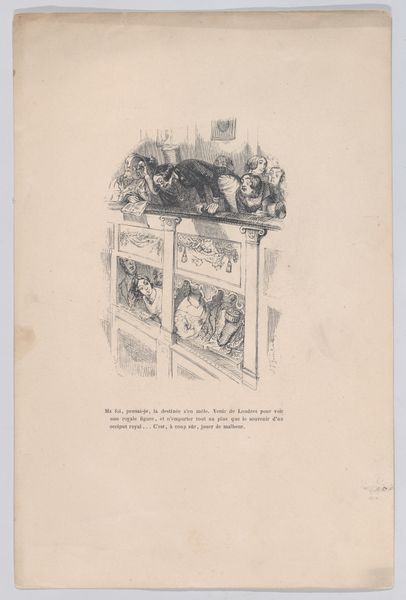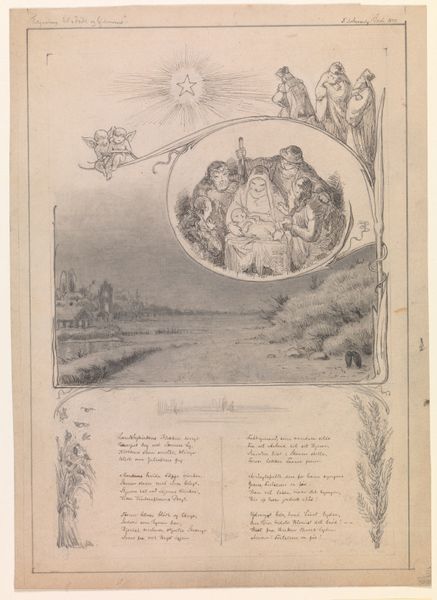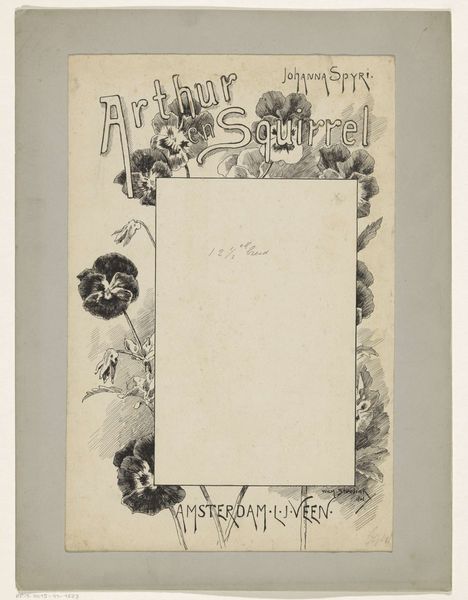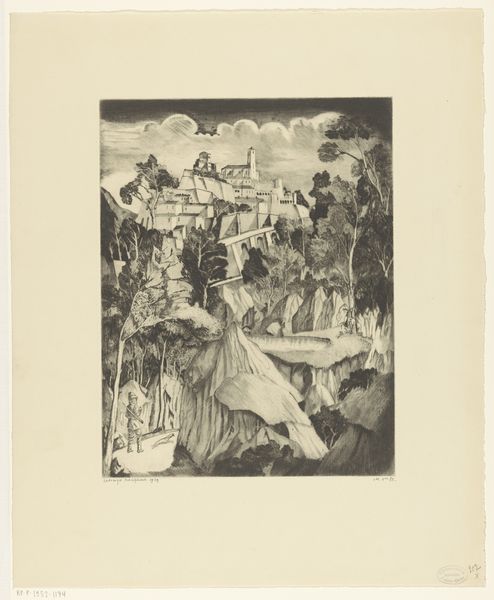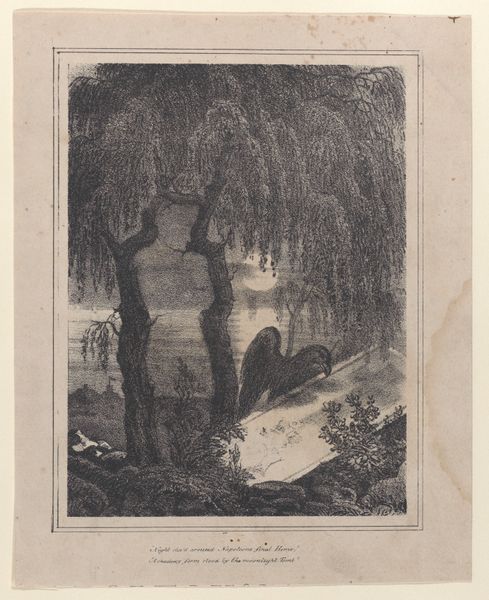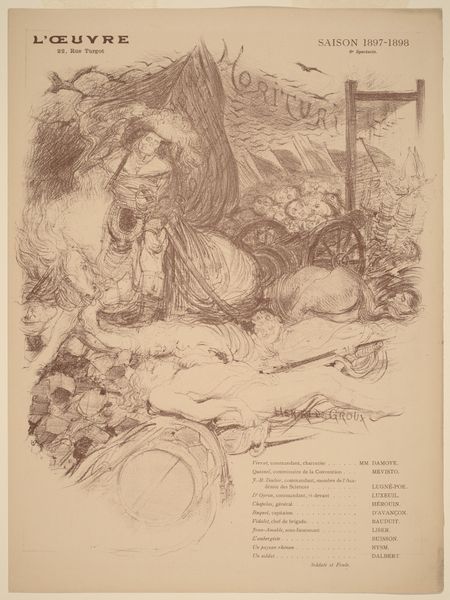
print, watercolor
#
narrative-art
# print
#
watercolor
#
coloured pencil
#
folk-art
#
watercolour illustration
Dimensions: height 366 mm, width 268 mm
Copyright: Rijks Museum: Open Domain
Gaston Gélibert created this print, "The Town Rat and the Field Rat," using chromolithography. This color printing technique, popular in the late 19th century, allowed for mass production of vibrant images. Notice how Gélibert uses this process to contrast the textures and settings of the fable. The opulent, cluttered table of the town rat, with its glossy glassware and reflective silverware, sharply contrasts with the rough, earthy foreground of the field rat’s humble home. Chromolithography, with its ability to mimic a painterly effect, emphasizes these differences, highlighting the social commentary inherent in Jean de la Fontaine’s story. The process involved creating multiple lithographic stones, one for each color. The labor-intensive nature of chromolithography reflects the wider industrial context of the era, with its increasing division of labor and mass production. By understanding the material and processes involved in creating this print, we can appreciate how Gélibert uses chromolithography to enhance the storytelling and social critique within the artwork.
Comments
No comments
Be the first to comment and join the conversation on the ultimate creative platform.
